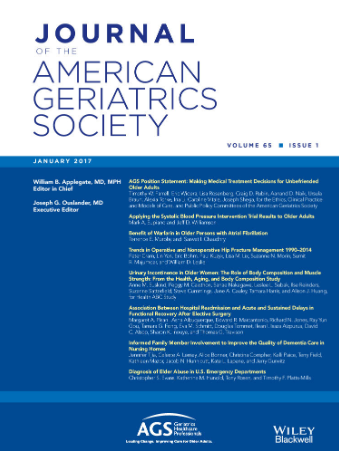Artificial Nutrition Preferences Among California Nursing Home Residents
Abstract
Background
The use of feeding tubes has shown no benefit in persons with advanced dementia and has declined over the last decade in this population. However, racial disparities in feeding tube placement have persisted. To better understand disparities in feeding tube use among nursing home residents, we examined artificial nutrition preferences over 6 years among all California nursing home residents, including differences by race, ethnicity, and cognition.
Methods
We used the CMS Long-term Care Minimum Data Set (MDS) and the California MDS Section S, which reports completion and contents of POLST (Physician Orders for Life Sustaining Treatment) for California nursing home residents, from 2011 to 2016. For each year, we created a cross-sectional cohort and examined racial and ethnic differences in artificial nutrition preferences stratified by resident length of stay, cardiopulmonary resuscitation preference, and degree of cognitive impairment using logistic mixed-effects regression, adjusted for resident and nursing home characteristics.
Results
Of 762,659 unique individuals in California nursing homes from 2011 to 2016, 160,160 completed a POLST in 2011 and 233,868 in 2016. Resident preferences for artificial nutrition did not change substantively over time. Among long-stay residents, the preference for receipt of artificial nutrition was higher among residents with CPR orders, varied by race and ethnicity, and increased as cognitive impairment worsened. This was most pronounced among long-stay residents with severe cognitive impairment and DNR orders, where the preference for receipt of artificial nutrition was lowest among White, non-Hispanic residents (adjusted predicted probability 0.22, 95% 0.21, 0.24) and higher among Black (adjusted difference in probability: +0.22, 95% CI: 0.19–0.26), Hispanic (+0.19, 95% CI: 0.16–0.22), and Asian/Pacific Islander (+0.24, 95% CI: 0.21–0.27) residents.
Conclusions
Racial and ethnic differences in POLST orders for feeding tube use persist among long-term care nursing home residents with dementia and may reflect disparities in end-of-life care quality.





 求助内容:
求助内容: 应助结果提醒方式:
应助结果提醒方式:


